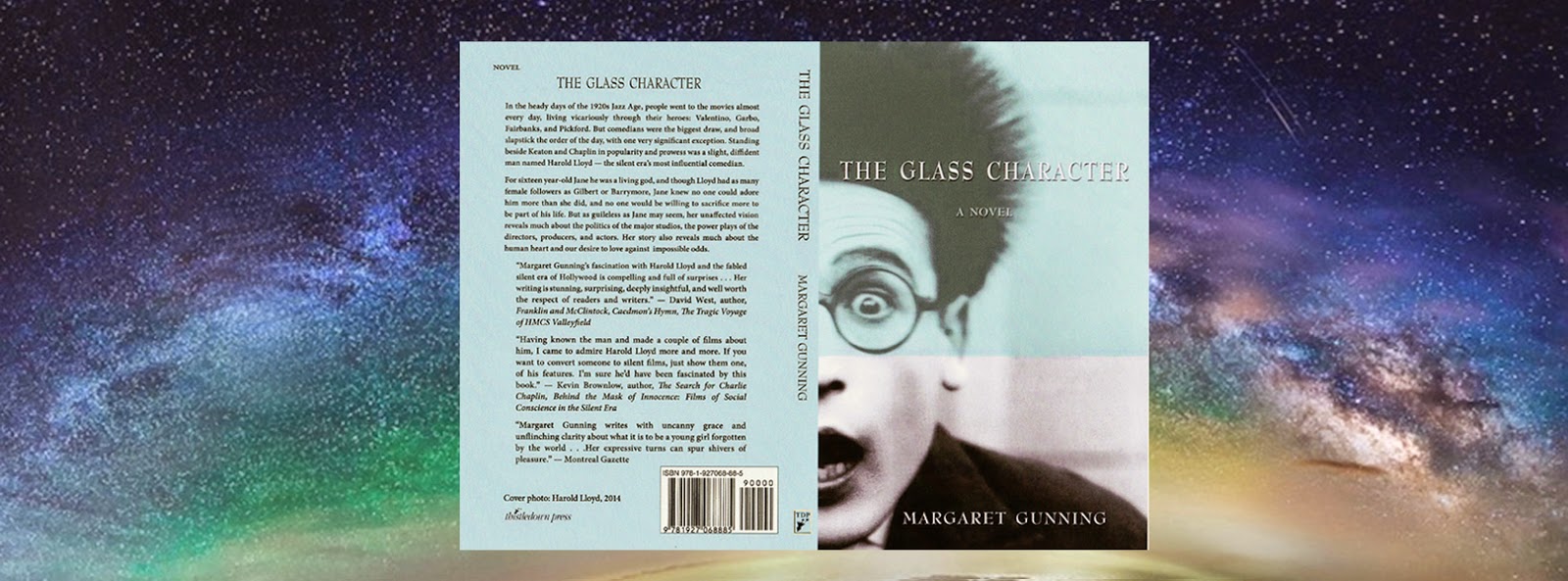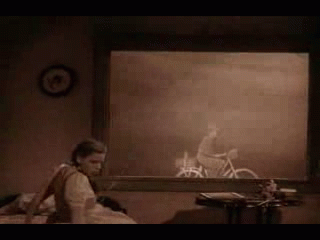Wednesday, November 16, 2011
You've got to hear this to believe it
We had to devote at least one post to the incredible Florence Foster Jenkins, a performer so godawful as to reach the realm of the sublime.
The legend is that she truly believed she was a great and gifted singer. Certainly she had a loyal following and once even played Carnegie Hall. Her devoted accompanist, a man with the astonishing name of Cosme McMoon, would sometimes make faces behind her back as she sang, thereby explaining to her why so many people were laughing.
Only a few recordings of Jenkins (whose real first name was Narcissa) still exist, probably because she was boycotted by every record company in the country. Jenkins albums are always padded out with a few other awful singers, no doubt her friends. My theory on how she got recorded: someone melted down an old record, then ran around and around and around it with a needle. No doubt this primitive technology improved her sound.
Oh, it's just astonishing when I listen to this, for every time it seems to get worse!
http://members.shaw.ca/margaret_gunning/betterthanlife.htm
Thomas Burns sings Salut! Demeure Chaste et Pure
In contrast to the excruciating Florence Foster Jenkins, here is a man who truly can sing.
At least, one person thought so.
http://members.shaw.ca/margaret_gunning/betterthanlife.htm
Tuesday, November 15, 2011
DAM IT ALL: beavers kick polar bear ass!
(To celebrate July 1, I'm going to goof off and eat those cheese thingies and stuff like that. In other words, I don't want to work. But here's a nice piece, so old it's new, almost! Enjoy it, folks, and remember to respect your beaver friends, or they will gnaw down a tree that will pound you into the ground like a tent peg. Happy Canada Day!)
Adrian Humphreys, National Post
Oct 28, 2011 – 7:00 AM ET | Last Updated: Oct 28, 2011 12:55 PM ET
Polar bear should replace 'dentally defective rat' - the beaver - as Canada's national emblem: Senator
Oct 28, 2011 – 7:00 AM ET | Last Updated: Oct 28, 2011 12:55 PM ET
Polar bear should replace 'dentally defective rat' - the beaver - as Canada's national emblem: Senator
A Canadian senator has called for a national “emblem makeover” by replacing a vegetarian rodent that defends its territory with urine with the world’s largest walking carnivore that thrives in the cold.
Referring to the beaver as a “dentally defective rat,” Nicole Eaton called on Ottawa to replace the critter as the national emblem with the polar bear, an animal she hails as strong, majestic and brave.
“It is high time that the beaver step aside as a Canadian emblem or, at the least, share the honour with the stately polar bear,” Ms. Eaton said in the Senate Thursday.
“A country’s symbols are not constant and can change over time as long as they reflect the ethos of the people and the spirit of the nation.”
The Department of Canadian Heritage has the beaver as the only animal on its list of “national emblems,” a tally that includes the maple tree, the maple leaf and maple leaf tartan.
The beaver is certainly deeply entwined in Canada’s history.
The trade of beaver pelts during European colonization was so lucrative the venerable Hudson’s Bay Company put the beaver on its coat of arms in 1678, four of them, in fact. That same year, the governor of New France suggested the beaver as a suitable emblem for the colony.
When designing the first Canadian postage, they . . . awww, screw the rest!
WE HAVE THE BEST!
Didja ever see a beaver makin' lodges in the lake
And the way he chews on tree bark
It can can make your tummy ache
For beavers are so busy,
busy, busy all the way
You can keep your goddamn polar bears
Coz beavers rule the day!
(Chorus) Beavers, beavers, beavers, beavers,
Beavers rule the day!
Now a beaver never ate someone
But bears eat kids all day
Their breath it stinks from all that fish
We know it's not OK
But beavers only eat the trees
And chop the maples down
And swamp the fields and wreck the roads
and flood the whole damn town!
(EVERYBODY!)
Beavers, beavers, beavers. . . OK, you get the idea, eh?
Now the beaver once was very big
Just like a buffalo
And cave men kept him as their pets
They loved his flat tail so
So you shouldn't say he's boring
You shouldn't say he's small
Cuz when the earth began, he was
The meanest rat of all!
(Patriotic interlude) Where would our country be without the beaver? Maybe people wouldn't make fun of us so much for having a rodent as our national emblem. But hey, he made good fur, didn't he? I mean for those, like, fur hats for Hudson's Bay or something? He's busy all the time eating wood and chopping down the trees. Bears lie around and do squat all day, almost as bad as those eagles. Who needs trees anyway? There are way too many of them. But there can never be too many beavers. Eh?
Beavers! Beavers! Beavers!
We really think they're fine
We really think they're fine
We love him more than stinky bears
He's yours, he's ours, he's mine
He's part of our, like, history
He sacrificed his pelts
Let's hear it for the BEAVER:
We don't want no one eltse!
Dear Sir or Madam, will you read my book
Amazon
http://www.amazon.com/-/e/B001K7NGDA
Thistledown Press
We don't want no one eltse!
Dear Sir or Madam, will you read my book
It took me years to write, will you take a look
Order The Glass Character from:
http://www.amazon.com/-/e/B001K7NGDA
Barnes & Noble
Thistledown Press
Gabrielle Giffords: a bizarre miracle
Last night I watched the much-anticipated Diane Sawyer interview with Congresswoman Gabrielle Giffords, the woman gunned down ten months ago by a maniac outside a grocery store where she was chatting with her constituents. Her head was literally blown apart, the top of her skull shattered in an injury so catastrophic that the press initially announced she was dead.
The culture loves success stories, and comeback stories are even more remarkable. I watched the interview in fascination, wondering if the radiantly-smiling, vibrant and confident Gifford we saw before the shooting had retrieved enough of herself that she could be considered completely recovered.
Much was made of her charismatic, determined personality as a public figure, and indeed she did seem appealing, a go-getting kind of woman who appeared to disregard every personal obstacle. Her astronaut husband spent much of his time away on missions, truly living the American dream.
All that was blown apart in an instant. There was an explosion: a bullet; a ruptured skull. Life itself was shattered and remained attached only by the thinnest of threads.
The scenes of her early recovery are gruesome: her eyes are open and glassily staring while she listlessly raises a hand or a finger in response to commands. Then comes the long and impossibly gruelling daily therapy to try to drag her back to her former self, or at least some semblance of it.
Watching this, I was reminded of Christopher Reeve, a man stricken down in his body more than his brain. He was the person whom I first heard say, "Anything can happen to anyone at any time."
He should know.
I had a strange, even uncomfortable feeling watching this program. Though Giffords smiles radiantly through most of it, and intelligence still flashes in her eyes, she can barely put a sentence together and gropes for words. Her husband, who comes across as a sort of emotionless personal trainer, prompts her and even finishes her thoughts. In that stalwart, never-say-die American way, the way that brooks no obstacles nor even recognizes them, we hear him insist that she will attain nothing short of "100% recovery".
It's the astronaut's way, isn't it? Figures; percentages. There is no doubt this man cares about his wife, but I never once saw a hint of tears, vulnerability, or the kind of traumatized shock that would be natural even in the most emotionally-reserved of spouses.
The thing that astonished me the most about this fascinating but deeply unsettling interview was the fact that Diane Sawyer wanted to know if she would go back to Congress next May. The spectre of a woman struggling with massive aphasia while trying to keep up a stressful political career was almost macabre. But it's the hallmark of that "100%" myth: we can't just recover part of the way. It must be total. We must go back to being the person we were, our "old self" again.
There is no "old self".
There is the self of today, which is fluid and which changes and fluctuates moment-by-moment and can be interrupted or even destroyed in a nanosecond. If we were fully aware of this, we probably wouldn't be able to go out the door. So we wrap invincibility around ourselves, a sense of special protection by supernatural forces (that is, if we believe in "God"). We see tangible outcomes and cling to them, throw them up like grappling hooks in hopes of being able to gain purchase and pull ourselves up.
I find it interesting, in cases of extreme brain damage, what it is that remains: in the program, Sawyer states that science has no idea which part of the brain is responsible for "personality" (whatever that is). In the case of Giffords, the smile remains - in fact, its dazzlement is a little eerie - along with a coached-looking gesture of a determined, waved fist. This is "the old Gabby" shining through. One wonders how much is locked up inside a badly-damaged structure, like a liver or pancreas severely compromised and barely able to perform its usual function.
And yet, wrapped inside what seems like a desolate truth, that flexibility of personal identity, that fluidity, offers the key to a different kind of recovery: a self not "whole" in a conventional sense - certainly not the "old self" - but someone radically new. What is retained is a kind of bare essence (and where in the brain does that reside? How much do we know about the mysterious structure that supposedly calls all the shots in human existence?). Gabrielle Giffords has become not so much a shadow-self as a sister-self, a kind of spiritual twin, someone who looks like her, gestures like her, but is (in the words of the great poet Yeats) "changed, changed utterly."
"A terrible beauty is born," the poet says. And because of this bizarre miracle, beauty has somehow emerged from the very worst kind of terror.
Monday, November 14, 2011
Suddenly, when you least expect it
Suddenly
when you least expect it:
the sky balloons in a fever of fire
all is changed, disarranged and
retrieve though you try
there is no rely or re-try
suddenly
when you
least
expect
it:
all
falls
away
in
an instant
then
life
meets
leap
and the eye
of i-dea
the chime
of mine
or thine:
comes the sweetest taste you will never-ly know
on the lips like God's very kiss
but oh can you know it
oh can you know?
and when's-it your turn?
do you think you know when?
Don't say that you know
it comes when
it comes when?
if your tears were the ever-last thing that I saw -
if your sweet fruits of mirth were my last burst of song
if
all pink things
were
sweet-ripped, yes
today: then
today, then -
today
Sunday, November 13, 2011
There's that bird again!
OK then. . .one more Oz video, and I promise to shut up. Though we haven't quite resolved the controversy over the Suicidal Munchkin in The Wizard of Oz, we're closing in on a solution. Conspiracy theorists swear they see a munchkin swinging from a noose in the background of the sprightly "We're Off to See the Wizard" quickstep number. And I've seen it, believe me I've seen it. It was way weird and it really did look like something swinging, even if it was only a sandbag.
Then these other clips of the same scene started showing up that had something else in place of the so-called dead munchkin. If you really looked at it, it was obviously a giant bird of some kind stretching its wings out. Bizarre, but that's what it looked like.
So now Oz afficionados are combing every frame of the movie to find evidence of That Bird. And here it is! Right at the beginning of the Tin Man's song, one of my personal faves because I loved how he had to be oiled, you see a giant bird madly flapping its wings between Dorothy and the Tin Man. It's only on for a second, but if you watch for it it's totally obvious.
So which came first. . . dead midget or flapping crane?
Which one is real, and which one is photoshopped? Wouldn't it be a whole lot easier to photoshop a swinging dead body than a bird?
But that just raises another issue: what the hell is a tin man? I mean. . . a scarecrow. A lion, yes. Maybe even a munchkin, coz there are lots-a short people around. But who'd make a guy outta tin, I ask you. In the original book he was the Tin Woodman, but that doesn't make me feel too much better.
As for that bird, who knew? I don't remember no dern-toon-derrin' birds in Wizard of Oz. I need to watch the whole thing again and do a bird count.
http://members.shaw.ca/margaret_gunning/betterthanlife.htm
Outward Bound
Outward bound upon a ship that sails no ocean
Outward bound, it has no crew but me and you
All alone when just a minute ago the shore was filled with people
With people that we knew
Outward bound, it has no crew but me and you
All alone when just a minute ago the shore was filled with people
With people that we knew
Outward bound upon a journey without ending
Outward bound, uncharted waters beneath our bow
Far behind, the green familiar shore is fading into time
And time has left us now
So farewell, adieu, so long, vaya con Dios
May they find whatever they are looking for
Remember when the wine was better than ever again
We could not ask, we could not ask for more
Outward bound upon a ship with tattered
sail
Outward bound upon a crooked lonesome trail
Things we learn, we'll just be satisfied in knowing
And we'll tell it to our kids as a fairy tale
Outward bound upon a crooked lonesome trail
Things we learn, we'll just be satisfied in knowing
And we'll tell it to our kids as a fairy tale
So farewell, adieu, so long, vaya con Dios
May they find whatever they are looking for
Remember when the wine was better than ever again
We could not ask, we could not ask for more
May they find whatever they are looking for
Remember when the wine was better than ever again
We could not ask, we could not ask for more
http://members.shaw.ca/margaret_gunning/betterthanlife.htm
Saturday, November 12, 2011
Munchkin Suicide Debunked: IT'S A BIRD!
Good morning, people. I've found the answer to the munchkin suicide riddle in The Wizard of Oz. Someone actually found a scene where a very large bird is wandering around loose on the set. It looks gigantic, like some sort of dinosaur, which I guess is creepy enough. The woman on the video calls it a "peacock", but it's much too tall for that (peacocks go sideways rather than up), like a crane of some sort. It has a long neck and a very wide wingspan which you can clearly see in the background scene. Its head dips up and down and it partially turns. Now, I have no idea why they let birds wander around loose like this, probably leaving gigantic birdie-poops all over the set, or whether there were any other critters around that we just haven't ever focused on. I'd have to watch it again and be on "critter alert". It'd be interesting! Maybe there's a bandicoot having sex in the background or something.
(but I found this also, just now: Wiki sez there might be something going on:)
Hanging Munchkin Suicide Rumor
An urban legend claims that, in the 1939 film, a Munchkin can be seen committing suicide (hanging by the neck from a prop tree and swinging back and forth) far away (left) in the background, while the Tin Man, Dorothy, and the Scarecrow are singing "We're off to see the wizard, the wonderful Wizard of Oz!" and skipping down the Yellow brick road into the distance. However, what is mistaken for a Munchkin can be seen to be a large bird (possibly an emu or a crane) spreading its wings; there is a black tip on the wings. However there are many thoughts thats the bird was editted into the videos and DVDs upon realisation at the view. There are known to be two clips of the scene, one with a shadow that looks like the bird and another that looks like the hanging munchkin [42]
We'll try to avoid analyzing all the spelling and grammar imistakes in this article - it's likely one of those entries of questionable validity. But the truth is, I DID see two clips that were very different from each other. The video where the speed slows down to a near-crawl shows what looks eerily like a small maybe-human figure, or else a sack of cement, hanging and swaying back and forth. Now the hanging camp is saying the bird was photoshopped in later to cover the macabre view (and to avoid dragging everyone back into the studio for a retake). But that leaves the mystery of the large emu or crane or whatever, bumbling around on the set in earlier scenes. My bet is still with the bird.
The Wizard of Oz: Little People, Big Suicide
Alrighty then! Having scouted around amongst the hundreds of Wizard of Oz clips with dangling little people, I've found some pretty convincing truth that what we see in the background is a giant bird wandering around loose on the set, dipping its head to eat something and then stretching its wings out. The more you look at it, the more you see it.
The one I posted yesterday was just weird, as if they had somehow altered the image to look like something swinging back and forth. I think it had been doctored to match the urban/Hollywood myth about the suicidal munchkin.
I found another video that I will also post, in which we actually see the bird in another scene! I want to watch the whole movie again: probably there are lots of weird creatures wandering around to add atmosphere.
Friday, November 11, 2011
Subscribe to:
Posts (Atom)















































